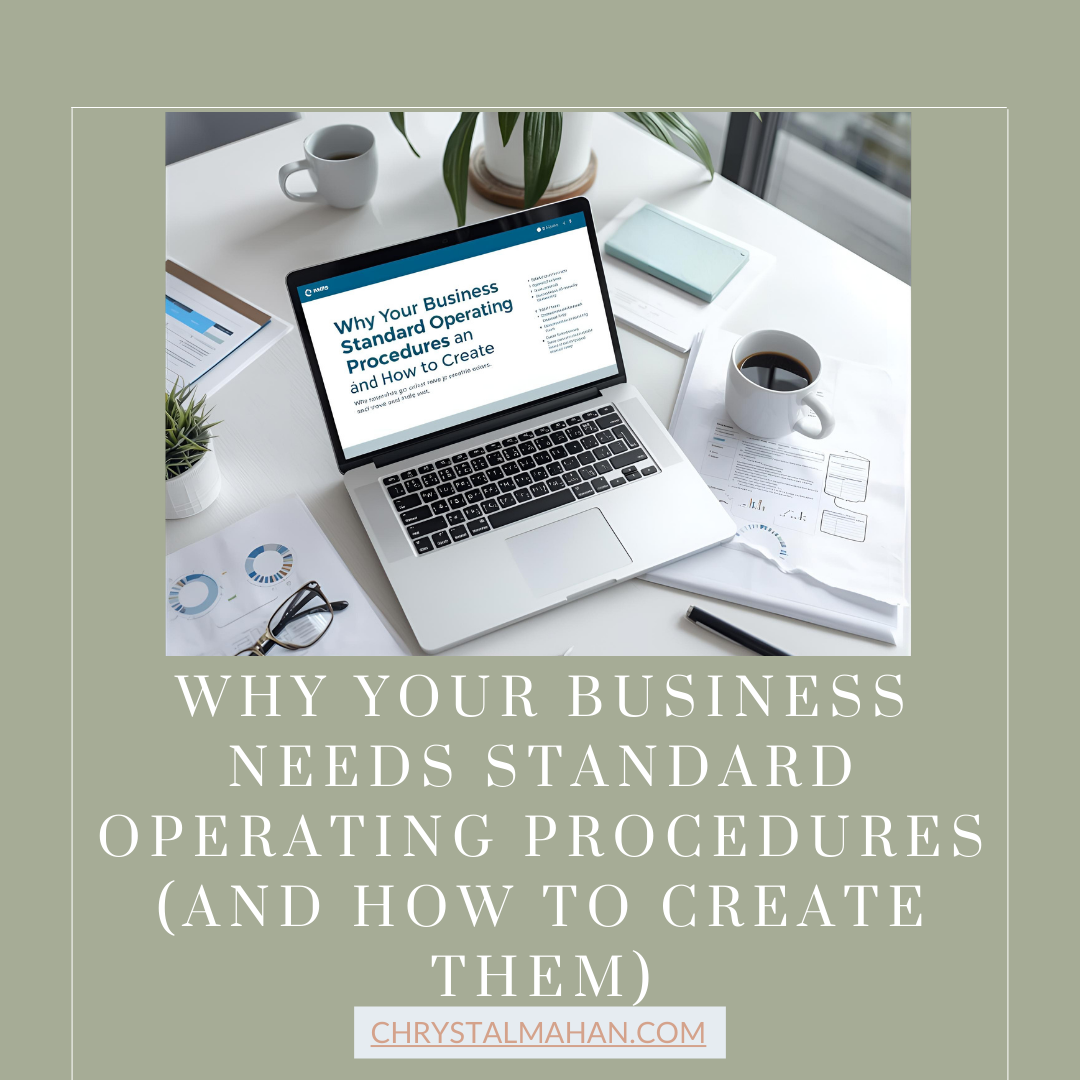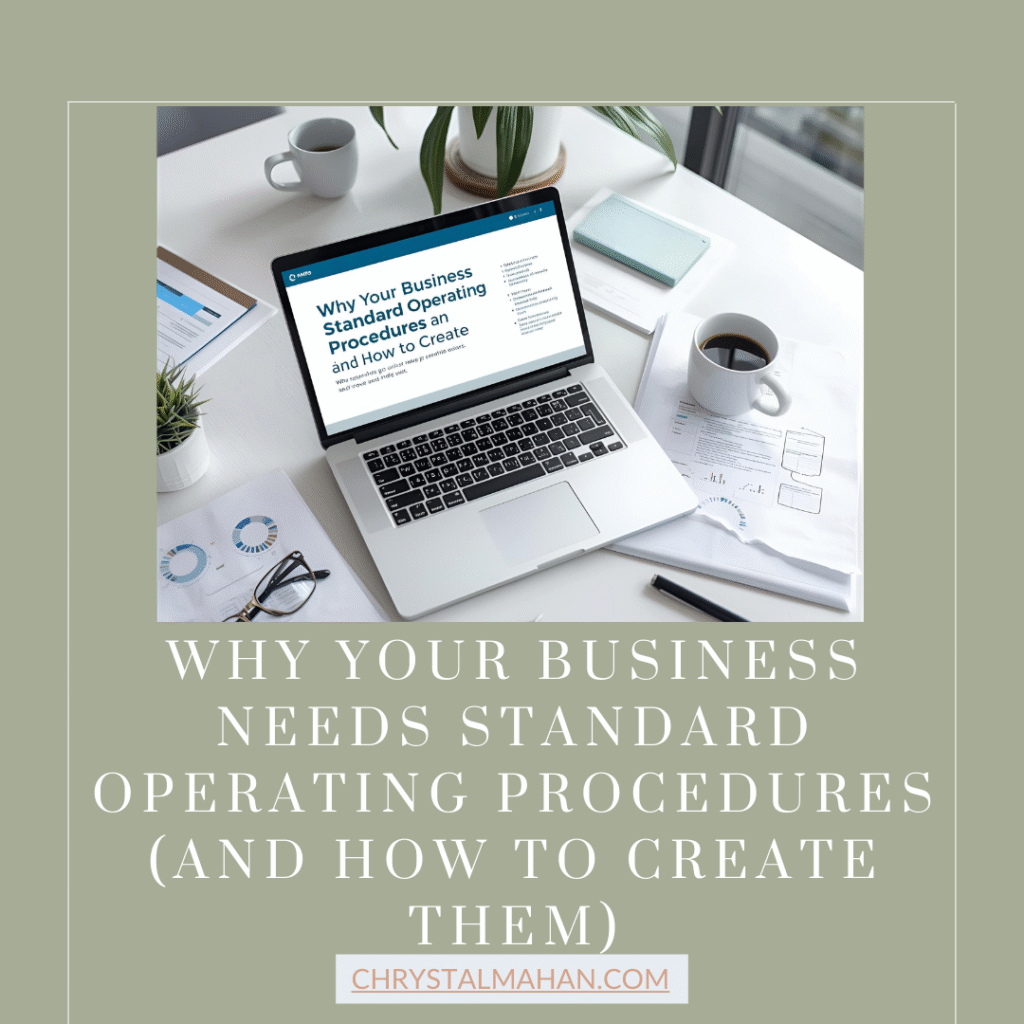Why Your Business Needs Standard Operating Procedures (And How to Create Them)


Every successful business owner has experienced that moment when they realize their company has outgrown the informal systems that once worked perfectly. Tasks that used to flow seamlessly now create bottlenecks. New employees struggle to understand processes that exist only in the founder’s mind. Quality becomes inconsistent as different team members handle the same tasks in completely different ways. What started as a nimble startup now feels chaotic and unpredictable.
The story is all too familiar: a passionate entrepreneur builds a thriving business through sheer determination and hands-on involvement. Every process runs through them, every decision requires their approval, and every task reflects their personal touch. While this approach works in the early stages, it becomes the very thing that prevents the business from reaching its next level of success. The founder becomes trapped in their own creation, unable to step back or scale effectively because nothing can function without their constant presence.
Standard Operating Procedures offer the solution that transforms businesses from founder-dependent operations into scalable, efficient organizations. These documented processes create the foundation for consistent quality, streamlined training, and sustainable growth. By implementing well-designed SOPs, business owners can finally break free from the day-to-day operations while ensuring their company maintains the standards that made it successful in the first place.
The Hidden Costs of Operating Without Standard Procedures
Running a business without documented procedures might seem efficient in the short term, but the hidden costs compound rapidly as organizations grow. When processes exist only in people’s heads, every task becomes subject to individual interpretation and variation. This inconsistency directly impacts customer experience, as clients receive different levels of service depending on which team member handles their request. The resulting confusion and frustration can damage relationships that took years to build.
Employee productivity suffers significantly when workers must constantly seek clarification or make assumptions about proper procedures. New hires face an especially steep learning curve, often taking months to reach full productivity because they must piece together information from multiple sources. Even experienced employees waste valuable time recreating processes or correcting mistakes that could have been prevented with clear guidelines. This inefficiency multiplies across every department and function within the organization.
The financial implications extend far beyond productivity losses. Businesses without SOPs frequently experience higher error rates, leading to costly rework, customer complaints, and potential liability issues. Quality control becomes nearly impossible when standards are not clearly defined and consistently applied. Additionally, the constant need for supervision and correction requires significant management time that could be better invested in strategic initiatives and business development activities.
How Standard Operating Procedures Transform Business Operations
Well-implemented SOPs create a ripple effect of positive changes throughout an organization. First and foremost, they establish consistency in every aspect of business operations, ensuring that customers receive the same high-quality experience regardless of timing or personnel involved. This consistency builds trust and reliability, two factors that directly contribute to customer retention and positive word-of-mouth marketing. When clients know they can depend on consistent service, they become more likely to increase their engagement and refer others to the business.
Employee performance improves dramatically when team members have clear, step-by-step guidance for their responsibilities. SOPs eliminate guesswork and reduce the stress associated with uncertainty about proper procedures. Workers can focus their energy on execution rather than interpretation, leading to higher job satisfaction and better results. New employees can be trained more efficiently and reach productive capacity much faster when they have comprehensive documentation to guide their learning process.
The transformation extends to management effectiveness as well. Leaders can shift their focus from constant oversight to strategic planning and business development. Decision-making becomes more data-driven because SOPs provide measurable standards against which performance can be evaluated. Problems can be identified and resolved more quickly because the established processes make it easier to pinpoint where breakdowns occur. This systematic approach to operations creates a foundation for sustainable growth and expansion.
Essential Elements Every Effective SOP Must Include
Creating effective SOPs requires more than simply writing down existing processes. The most successful procedures begin with a clear statement of purpose that explains why the process exists and what outcomes it should achieve. This context helps employees understand not just what to do, but why their actions matter to the overall business objectives. The purpose statement should connect individual tasks to larger company goals, creating meaning and motivation for consistent execution.
Detailed step-by-step instructions form the core of any effective SOP, but these must be written with the end user in mind. Each step should be specific enough to eliminate ambiguity while remaining practical for day-to-day use. Visual elements such as screenshots, diagrams, or flowcharts can significantly enhance understanding, especially for complex processes. The language should be clear and accessible to all relevant team members, avoiding technical jargon that might create confusion or barriers to implementation.
Quality control measures and success metrics must be built into every SOP to ensure ongoing effectiveness. These might include checklists, approval requirements, or specific benchmarks that indicate successful completion. Clear identification of roles and responsibilities prevents confusion about who should perform each task and who has authority to make decisions within the process. Finally, effective SOPs include troubleshooting guidelines that help employees handle common variations or problems without requiring immediate supervisor intervention.
Practical Steps to Develop SOPs That Actually Get Used
The most common mistake in SOP development is attempting to document every process simultaneously. Instead, successful implementation begins with identifying the most critical processes that have the greatest impact on customer satisfaction or business operations. Start with procedures that are performed frequently, have high stakes if done incorrectly, or require specific expertise that could be lost if key employees leave. This prioritized approach ensures that early efforts deliver maximum value and build momentum for broader implementation.
Involving the people who actually perform the work is crucial for creating SOPs that reflect reality rather than idealized versions of how processes should work. Experienced employees often have valuable insights about common challenges, shortcuts that maintain quality, or variations that are necessary for different situations. Collaborative development also increases buy-in and reduces resistance to following documented procedures. Consider organizing working sessions where team members can contribute their knowledge while a facilitator captures and organizes the information.
Testing and refinement are essential phases that many organizations skip in their eagerness to complete the documentation process. New SOPs should be piloted with a small group of users who can provide feedback about clarity, completeness, and practical usability. This testing phase often reveals gaps in the documentation or steps that seemed obvious to the creators but are confusing to others. Regular review and updating ensure that SOPs remain current as processes evolve and improve over time.
Your Next Steps Toward Operational Excellence
Standard Operating Procedures represent one of the most powerful tools available for transforming business operations and enabling sustainable growth. The investment of time and effort required to develop comprehensive SOPs pays dividends through improved efficiency, consistency, and scalability. Businesses that embrace systematic documentation of their processes position themselves for success in competitive markets where operational excellence often determines the difference between thriving and merely surviving.
The journey toward effective SOPs begins with a single process and grows into a comprehensive system that supports every aspect of business operations. Each documented procedure builds upon previous work, creating a knowledge base that becomes increasingly valuable as the organization grows. The key is to start with the most impactful processes and maintain momentum through consistent effort and continuous improvement.
Your business deserves the operational foundation that only well-designed SOPs can provide. The processes that have made your company successful can be preserved, improved, and scaled when they are properly documented and systematically implemented. Take the first step toward operational excellence by identifying your most critical processes and beginning the documentation journey that will transform your business operations.
Ready to transform your business operations with effective Standard Operating Procedures? CONTACT ME FOR HELP developing SOPs that will streamline your processes and accelerate your growth. READ MORE POSTS on business optimization strategies, or better yet, JOIN ME FOR COFFEE to discuss how systematic documentation can unlock your company’s potential for sustainable success.






